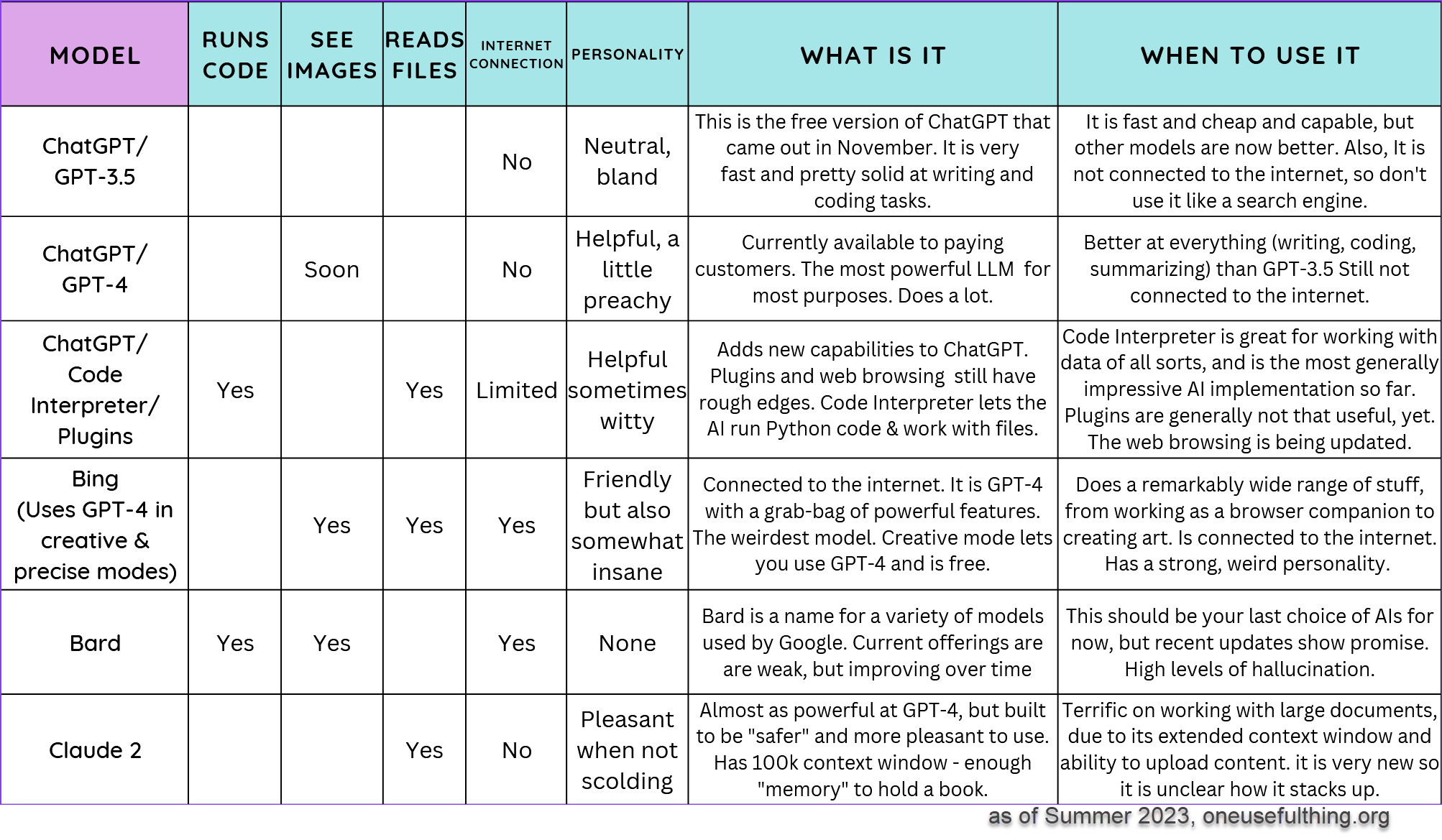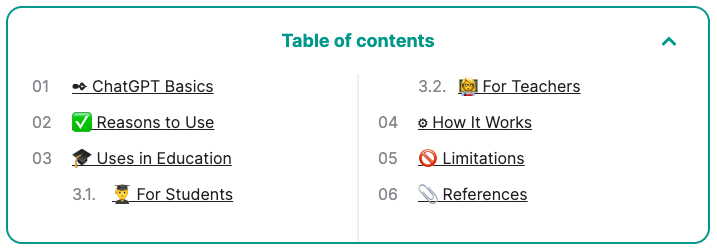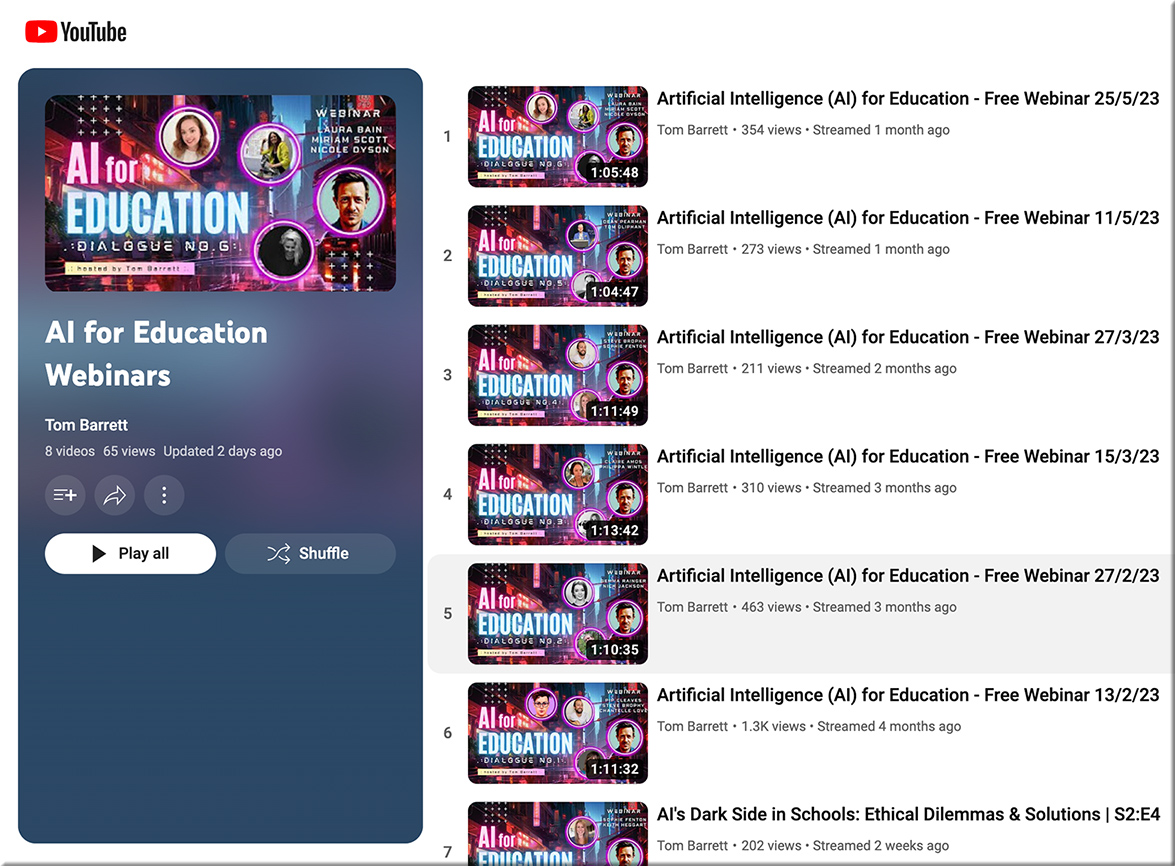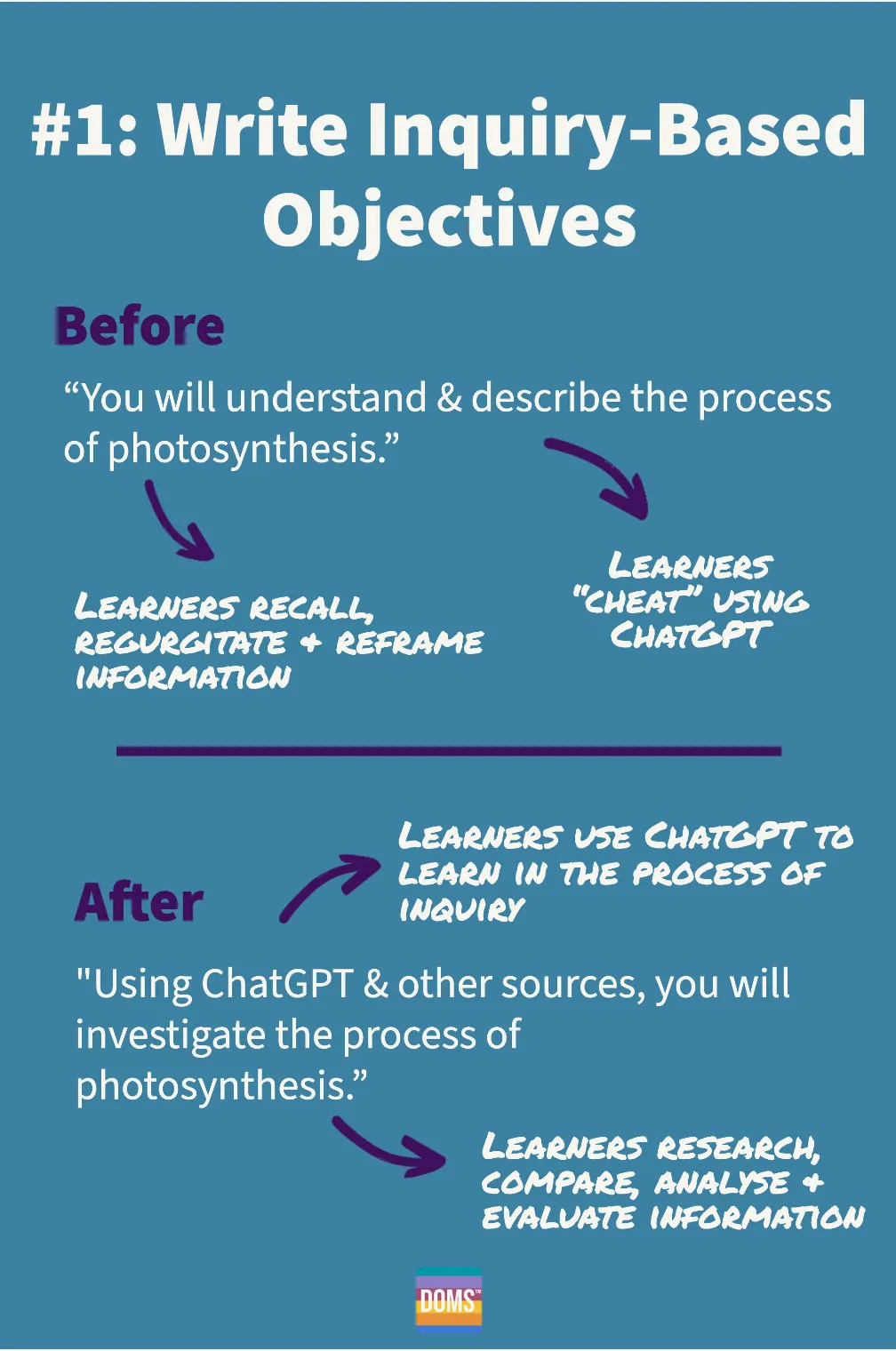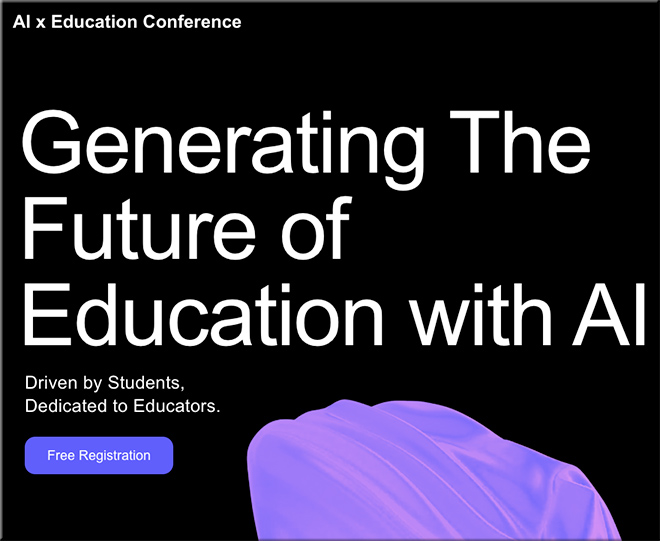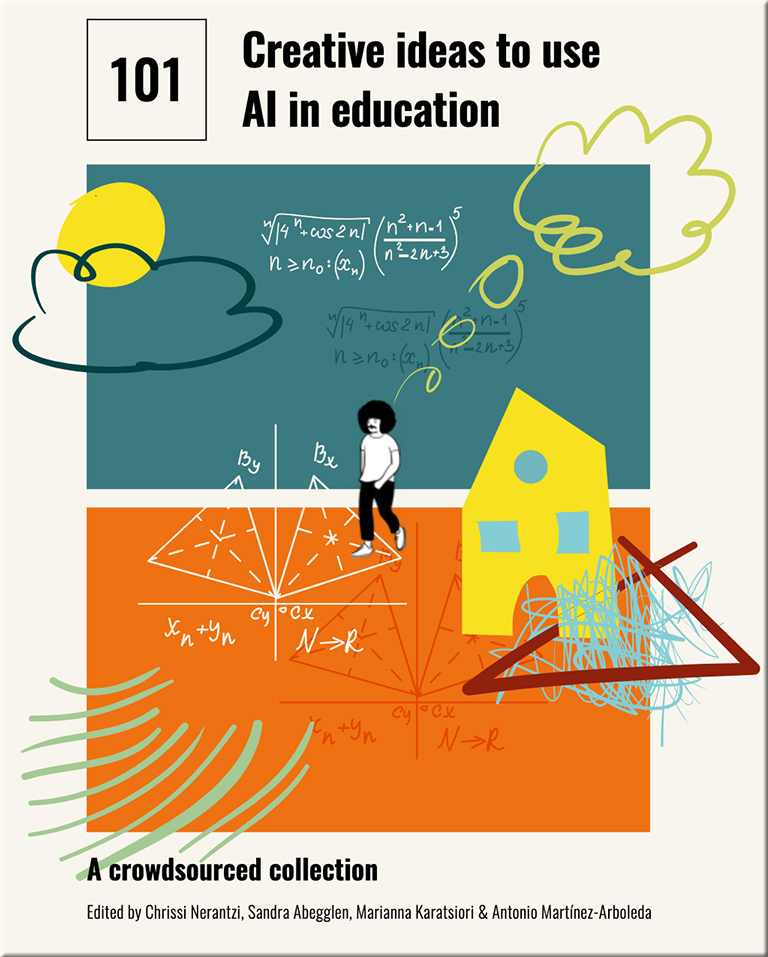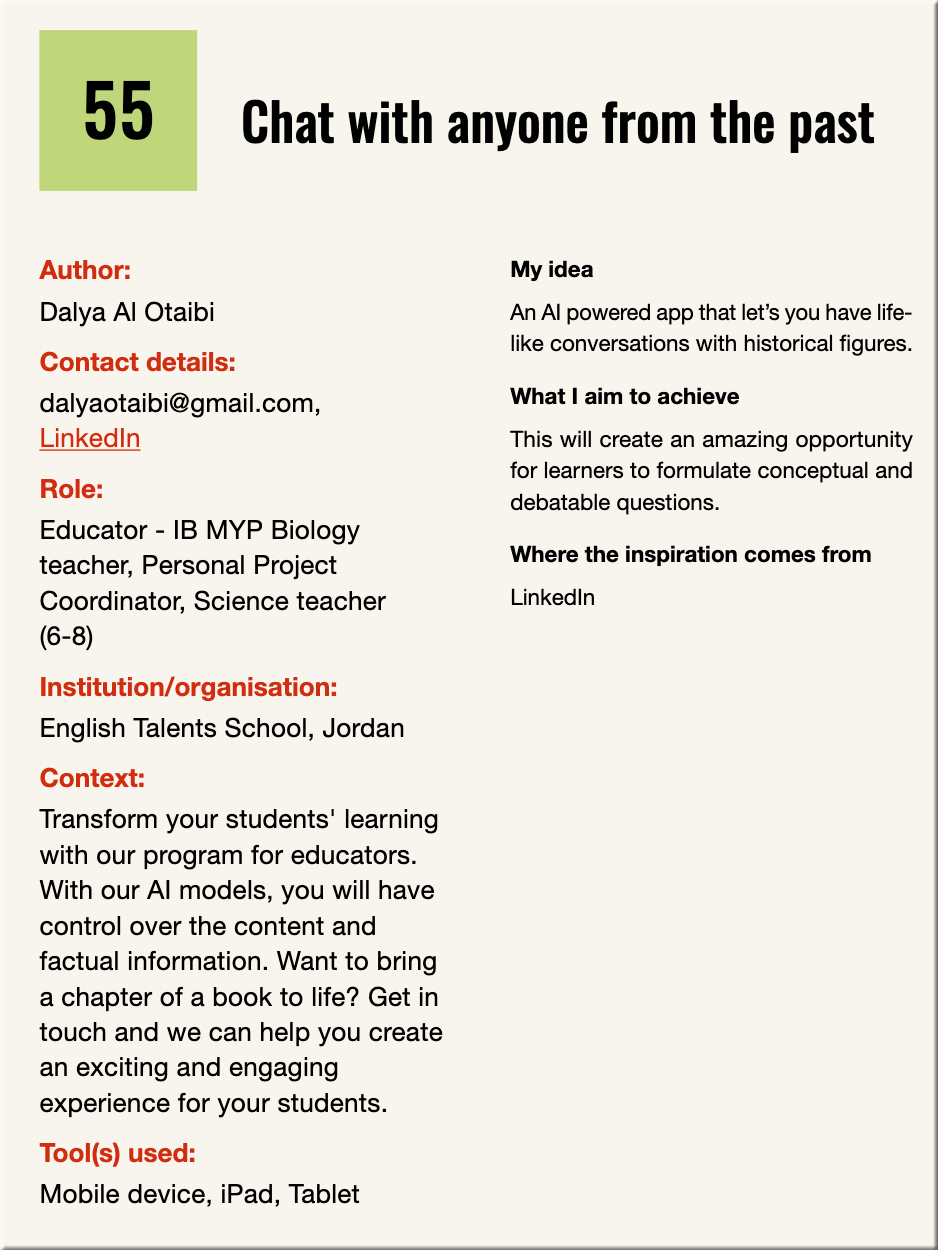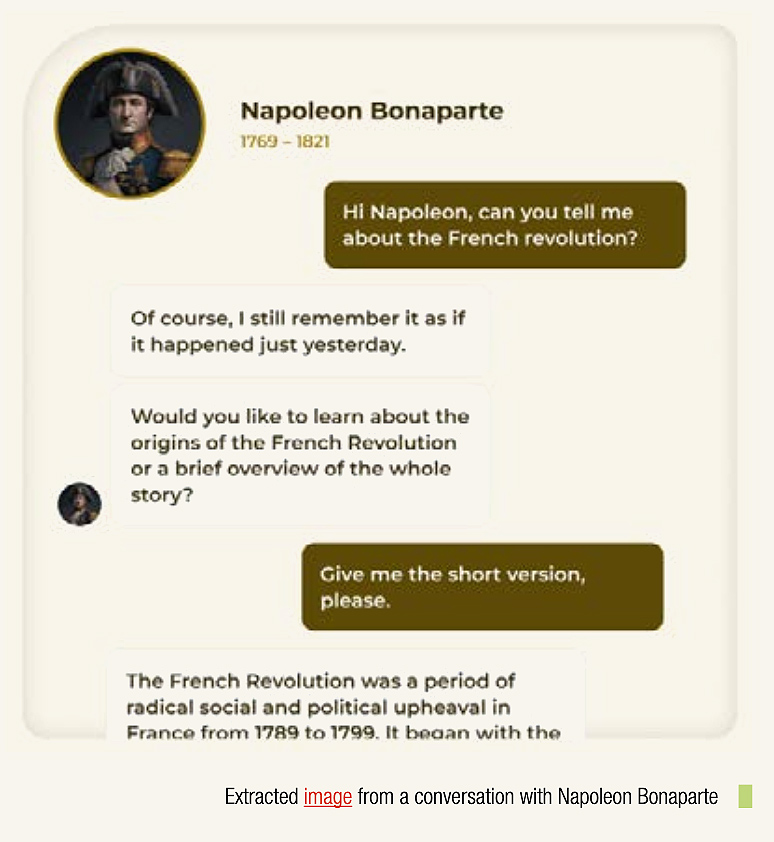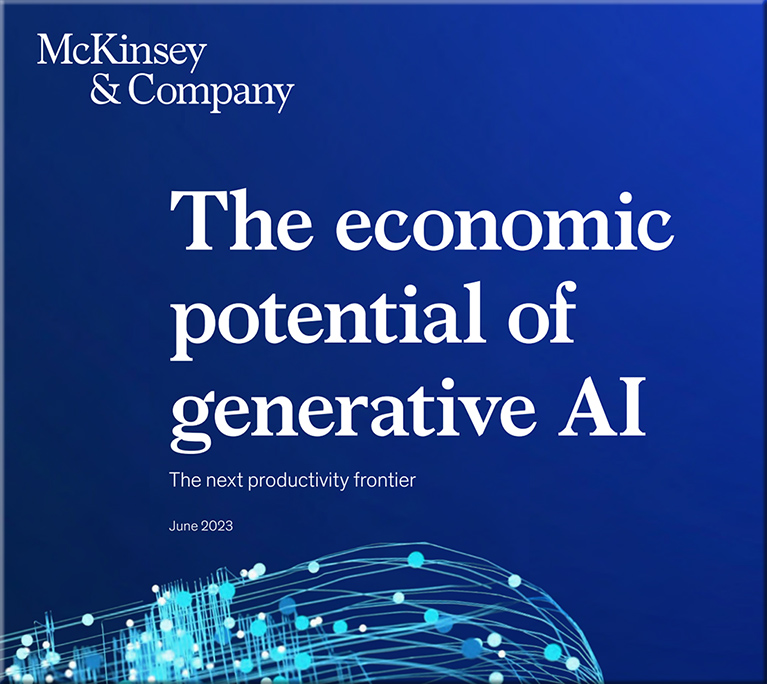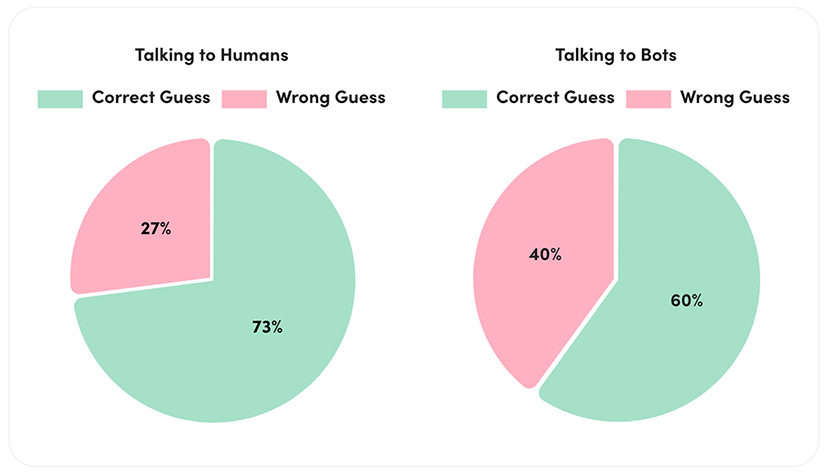How to Use AI to Do Stuff: An Opinionated Guide — from oneusefulthing.org by Ethan Mollick
Covering the state of play as of Summer, 2023
So, you want to become an instructional designer? — from drlukehobson.com by Luke Hobson
Excerpt:
The most significant problem I’ve seen for aspiring instructional designers is that they don’t have a solid plan in place with how to make acquiring a new job a reality. What does this involve? A monumental portion of instructional design is knowing about how learning works. Yes, there are other components about instructional design like technology, project management, relationship management, research, but at the end of the day, you need to know how people learn to design meaningful learning experiences. So, think of your instructional design journey as a learning experience. How would you reverse engineer this process to help you obtain your goal? Let’s start by asking a few questions:
YouTube tests AI-generated quizzes on educational videos — from techcrunch.com by Lauren Forristal
YouTube is experimenting with AI-generated quizzes on its mobile app for iOS and Android devices, which are designed to help viewers learn more about a subject featured in an educational video. The feature will also help the video-sharing platform get a better understanding of how well each video covers a certain topic.
Incorporating AI in Teaching: Practical Examples for Busy Instructors — from danielstanford.substack.com by Daniel Stanford; with thanks to Derek Bruff on LinkedIn for the resource
Since January 2023, I’ve talked with hundreds of instructors at dozens of institutions about how they might incorporate AI into their teaching. Through these conversations, I’ve noticed a few common issues:
- Faculty and staff are overwhelmed and burned out. Even those on the cutting edge often feel they’re behind the curve.
- It’s hard to know where to begin.
- It can be difficult to find practical examples of AI use that are applicable across a variety of disciplines.
To help address these challenges, I’ve been working on a list of AI-infused learning activities that encourage experimentation in (relatively) small, manageable ways.
September 2023: The Secret Intelligent Beings on Campus — from stefanbauschard.substack.com by Stefan Bauschard
Many of your students this fall will be enhanced by artificial intelligence, even if they don’t look like actual cyborgs. Do you want all of them to be enhanced, or just the highest SES students?
How to report better on artificial intelligence — from cjr.org (Columbia Journalism Review) by Syash Kapoor, Hilke Schellmann, and Ari Sen
In the past few months we have been deluged with headlines about new AI tools and how much they are going to change society.
Some reporters have done amazing work holding the companies developing AI accountable, but many struggle to report on this new technology in a fair and accurate way.
We—an investigative reporter, a data journalist, and a computer scientist—have firsthand experience investigating AI. We’ve seen the tremendous potential these tools can have—but also their tremendous risks.
As their adoption grows, we believe that, soon enough, many reporters will encounter AI tools on their beat, so we wanted to put together a short guide to what we have learned.
.
DSC:
Something I created via Adobe Firefly (Beta version)
The 5 reasons L&D is going to embrace ChatGPT — from chieflearningoffice.com by Josh Bersin
Does this mean it will do away with the L&D job? Not at all — these tools give you superhuman powers to find content faster, put it in front of employees in a more useful way and more creatively craft character simulations, assessments, learning in the flow of work and more.
And it’s about time. We really haven’t had a massive innovation in L&D since the early days of the learning experience platform market, so we may be entering the most exciting era in a long time.
Let me give you the five most significant use cases I see. And more will come.
AI and Tech with Scenarios: ID Links 7/11/23 — from christytuckerlearning.com by Christy Tucker
As I read online, I bookmark resources I find interesting and useful. I share these links periodically here on my blog. This post includes links on using tech with scenarios: AI, xAPI, and VR. I’ll also share some other AI tools and links on usability, resume tips for teachers, visual language, and a scenario sample.
It’s only a matter of time before A.I. chatbots are teaching in primary schools — from cnbc.com by Mikaela Cohen
Key Points
- Microsoft co-founder Bill Gates saying generative AI chatbots can teach kids to read in 18 months rather than years.
- Artificial intelligence is beginning to prove that it can accelerate the impact teachers have on students and help solve a stubborn teacher shortage.
- Chatbots backed by large language models can help students, from primary education to certification programs, self-guide through voluminous materials and tailor their education to specific learning styles [preferences].
The Rise of AI: New Rules for Super T Professionals and Next Steps for EdLeaders — from gettingsmart.com by Tom Vander Ark
Key Points
- The rise of artificial intelligence, especially generative AI, boosts productivity in content creation–text, code, images and increasingly video.
- Here are six preliminary conclusions about the nature of work and learning.
The Future Of Education: Embracing AI For Student Success — from forbes.com by Dr. Michael Horowitz
Unfortunately, too often attention is focused on the problems of AI—that it allows students to cheat and can undermine the value of what teachers bring to the learning equation. This viewpoint ignores the immense possibilities that AI can bring to education and across every industry.
The fact is that students have already embraced this new technology, which is neither a new story nor a surprising one in education. Leaders should accept this and understand that people, not robots, must ultimately create the path forward. It is only by deploying resources, training and policies at every level of our institutions that we can begin to realize the vast potential of what AI can offer.
AI Tools in Education: Doing Less While Learning More — from campustechnology.com by Mary Grush
A Q&A with Mark Frydenberg
Why Students & Teachers Should Get Excited about ChatGPT — from ivypanda.com with thanks to Ruth Kinloch for this resource
Excerpt re: Uses of ChatGPT for Teachers
- Diverse assignments.
- Individualized approach.
- Interesting classes.
- Debates.
- Critical thinking.
- Grammar and vocabulary.
- Homework review.
SAIL: State of Research: AI & Education — from buttondown.email by George Siemens
Information re: current AI and Learning Labs, education updates, and technology
Why ethical AI requires a future-ready and inclusive education system — from weforum.org
A specter is haunting higher education — from aiandacademia.substack.com by Bryan Alexander
Fall semester after the generative AI revolution
In this post I’d like to explore that apocalyptic model. For reasons of space, I’ll leave off analyzing student cheating motivations or questioning the entire edifice of grade-based assessment. I’ll save potential solutions for another post.
Let’s dive into the practical aspects of teaching to see why Mollick and Bogost foresee such a dire semester ahead.
Items re: Code Interpreter
Code Interpreter becoming available for all ChatGPT Plus users over the next week. Really amazing for any data science use case: https://t.co/hpel8xKyEg pic.twitter.com/Fd3SnPvVmT
— Greg Brockman (@gdb) July 6, 2023
I put together an initial prompt to set up Code Interpreter to create useful data visualizations. It gives it some basic principles of good chart design & also reminds it that it can output many kinds of files.
It is a first draft, feel free to improve: https://t.co/m4yAdKROiJ pic.twitter.com/r5A7PznqSC
— Ethan Mollick (@emollick) July 10, 2023
- What AI can do with a toolbox… Getting started with Code Interpreter — from oneusefulthing.org by Ethan Mollick
Democratizing data analysis with AI
Code Interpreter continues OpenAI’s long tradition of giving terrible names to things, because it might be most useful for those who do not code at all. It essentially allows the most advanced AI available, GPT-4, to upload and download information, and to write and execute programs for you in a persistent workspace. That allows the AI to do all sorts of things it couldn’t do before, and be useful in ways that were impossible with ChatGPT.
.
BREAKING: Code Interpreter is FINALLY rolling out to all ChatGPT Plus users.
It’s the most powerful feature OpenAI has released since GPT-4. It makes everyone a data analyst.
Here are 15 mind-blowing use cases of Code Interpreter: pic.twitter.com/qX0txynENS
— Aakash Gupta ? Product Growth Guy (@aakashg0) July 7, 2023
Legal items
- 2 authors say OpenAI ‘ingested’ their books to train ChatGPT. Now they’re suing, and a ‘wave’ of similar court cases may follow. — from businessinsider.com by Gabriel Rivera
- Authors Are Suing OpenAI & Meta For Copyright Infringement — from theneurondaily.com by Noah Edelman
MISC items
- America’s first law regulating AI bias in hiring takes effect this week — from downes.ca by Stephen Downes
- Eric Schmidt: This is how AI will transform the way science gets done — from technologyreview.com by Eric Schmidt
Science is about to become much more exciting—and that will affect us all, argues Google’s former CEO. - Microsoft unveils first professional certificate for generative AI skills — from zdnet.com/ by Lance Whitney
With the new AI Skills Initiative, people can take free online training via LinkedIn to learn concepts of AI good toward a Career Essentials certificate. - What is Claude 2? How to access this ChatGPT competitor. — from mashable.com by Cecily Mauran
It’s a decent alternative, and it’s easy to use. - Claude 2 — from anthropic.com
AI for Education Webinars — from youtube.com by Tom Barrett and others
Post-AI Assessment Design — from drphilippahardman.substack.com by Dr. Philippa Hardman
A simple, three-step guide on how to design assessments in a post-AI world
Excerpt:
Step 1: Write Inquiry-Based Objectives
Inquiry-based objectives focus not just on the acquisition of knowledge but also on the development of skills and behaviours, like critical thinking, problem-solving, collaboration and research skills.
They do this by requiring learners not just to recall or “describe back” concepts that are delivered via text, lecture or video. Instead, inquiry-based objectives require learners to construct their own understanding through the process of investigation, analysis and questioning.
.
Massive Disruption Now: What AI Means for Students, Educators, Administrators and Accreditation Boards
— from stefanbauschard.substack.com by Stefan Bauschard; via Will Richardson on LinkedIn
The choices many colleges and universities make regarding AI over the next 9 months will determine if they survive. The same may be true for schools.
Excerpts:
Just for a minute, consider how education would change if the following were true –
- AIs “hallucinated” less than humans
- AIs could write in our own voices
- AIs could accurately do math
- AIs understood the unique academic (and eventually developmental) needs of each student and adapt instruction to that student
- AIs could teach anything any student wanted or need to know any time of day or night
- AIs could do this at a fraction of the cost of a human teacher or professor
Fall 2026 is three years away. Do you have a three year plan? Perhaps you should scrap it and write a new one (or at least realize that your current one cannot survive). If you run an academic institution in 2026 the same way you ran it in 2022, you might as well run it like you would have in 1920. If you run an academic institution in 2030 (or any year when AI surpasses human intelligence) the same way you ran it in 2022, you might as well run it like you would have in 1820. AIs will become more intelligent than us, perhaps in 10-20 years (LeCun), though there could be unanticipated breakthroughs that lower the time frame to a few years or less (Benjio); it’s just a question of when, not “if.”
On one creative use of AI — from aiandacademia.substack.com by Bryan Alexander
A new practice with pedagogical possibilities
Excerpt:
Look at those material items again. The voiceover? Written by an AI and turned into audio by software. The images? Created by human prompts in Midjourney. The music is, I think, human created. And the idea came from a discussion between a human and an AI?
…
How might this play out in a college or university class?
Imagine assignments which require students to craft such a video. Start from film, media studies, or computer science classes. Students work through a process:
Generative Textbooks — from opencontent.org by David Wiley
Excerpt (emphasis DSC):
I continue to try to imagine ways generative AI can impact teaching and learning, including learning materials like textbooks. Earlier this week I started wondering – what if, in the future, educators didn’t write textbooks at all? What if, instead, we only wrote structured collections of highly crafted prompts? Instead of reading a static textbook in a linear fashion, the learner would use the prompts to interact with a large language model. These prompts could help learners ask for things like:
- overviews and in-depth explanations of specific topics in a specific sequence,
- examples that the learner finds personally relevant and interesting,
- interactive practice – including open-ended exercises – with immediate, corrective feedback,
- the structure of the relationships between ideas and concepts,
- etc.
Also relevant/see:
.
Generating The Future of Education with AI — from aixeducation.com
Designed for K12 and Higher-Ed Educators & Administrators, this conference aims to provide a platform for educators, administrators, AI experts, students, parents, and EdTech leaders to discuss the impact of AI on education, address current challenges and potentials, share their perspectives and experiences, and explore innovative solutions. A special emphasis will be placed on including students’ voices in the conversation, highlighting their unique experiences and insights as the primary beneficiaries of these educational transformations.
How Teachers Are Using ChatGPT in Class — from edweek.org by Larry Ferlazzo
Excerpt:
The use of generative AI in K-12 settings is complex and still in its infancy. We need to consider how these tools can enhance student creativity, improve writing skills, and be transparent with students about how generative AI works so they can better understand its limitations. As with any new tech, our students will be exposed to it, and it is our task as educators to help them navigate this new territory as well-informed, curious explorers.
Japan emphasizes students’ comprehension of AI in new school guidelines — from japantimes.co.jp by Karin Kaneko; via The Rundown
Excerpt:
The education ministry has emphasized the need for students to understand artificial intelligence in new guidelines released Tuesday, setting out how generative AI can be integrated into schools and the precautions needed to address associated risks.
Students should comprehend the characteristics of AI, including its advantages and disadvantages, with the latter including personal information leakages and copyright infringement, before they use it, according to the guidelines. They explicitly state that passing off reports, essays or any other works produced by AI as one’s own is inappropriate.
AI’s Teachable Moment: How ChatGPT Is Transforming the Classroom — from cnet.com by Mark Serrels
Teachers and students are already harnessing the power of AI, with an eye toward the future.
Excerpt:
Thanks to the rapid development of artificial intelligence tools like Dall-E and ChatGPT, my brother-in-law has been wrestling with low-level anxiety: Is it a good idea to steer his son down this path when AI threatens to devalue the work of creatives? Will there be a job for someone with that skill set in 10 years? He’s unsure. But instead of burying his head in the sand, he’s doing what any tech-savvy parent would do: He’s teaching his son how to use AI.
In recent months the family has picked up subscriptions to AI services. Now, in addition to drawing and sculpting and making movies and video games, my nephew is creating the monsters of his dreams with Midjourney, a generative AI tool that uses language prompts to produce images.
The AI Dictionary for Educators — from blog.profjim.com
To bridge this knowledge gap, I decided to make a quick little dictionary of AI terms specifically tailored for educators worldwide. Initially created for my own benefit, I’ve reworked my own AI Dictionary for Educators and expanded it to help my fellow teachers embrace the advancements AI brings to education.
7 Strategies to Prepare Educators to Teach With AI — from edweek.org by Lauraine Langreo; NOTE: Behind paywall
Pilot projects using AI in legal world produce mixed results, but still promising: legal tech panel — from canadianlawyermag.com by Zena Olijnyk
Canadian Legal Tech Summit attendees hear of challenges, benefits of AI as ‘hype’ continues to grow
Excerpt:
A pilot project designed to test the potential of artificial intelligence tools at McCarthy Tétrault LLP showed that certain types of applications for the legal profession seemed to work better than others, panellists told attendees to the recent Canadian Lawyer Legal Tech Summit.
“I would say that the results were mixed,” David Cohen, senior director of client service delivery for the firm. During the panel, moderated by University of Calgary assistant professor Gideon Christian, Cohen spoke about a pilot of about 40 lawyers from different practices at the firm who used an AI platform with only public data.
The group [testing the platform] said it needs to get better before we start using this for research,” he said. However, he said, when it came to tasks like generating documents, reviewing 100-page cases “and summarizing and analyzing them,” the AI platforms did much better.
What are the top legal technology trends in 2023? — from legalitprofessionals.com
Excerpt:
To help with this, our Client Success Team have summarised the eight key legal technology trends in the market, as well as the themes discussed at recent legal technology events and conferences including the British Legal Technology Forum and iManage ConnectLive Virtual 2023, both of which we were proud to sponsor.
On a somewhat related note, also see:
Designing the Law Office of the Future — from workdesign.com by Deborah Nemeth
Deborah Nemeth of SmithGroup shares how inspiration from higher education and hospitality can help inform the next evolution of the law office.
101 creative ideas to use AI in education, A crowdsourced collection — from zenodo.org by Chrissi Nerantzi, Sandra Abegglen, Marianna Karatsiori, & Antonio Martínez-Arboleda (Eds.); with thanks to George Veletsianos for this resource
As an example, here’s one of the ideas from the crowdsourced collection:
On a somewhat related note, also see:
Merlyn Mind launches education-focused LLMs for classroom integration of generative AI — from venturebeat.com by Victor Dey
Excerpt:
Merlyn Mind, an AI-powered digital assistant platform, announced the launch of a suite of large language models (LLMs) specifically tailored for the education sector under an open-source license.
Designing courses in an age of AI — from teachinginhighered.com by Maria Andersen
Maria Andersen shares about designing courses in an age of artificial intelligence (AI) on episode 469 of the Teaching in Higher Ed podcast.
With generative AI, we have an incredible acceleration of change happening.
Maria Andersen
The economic potential of generative AI — from mckinsey.com; via Superhuman
.
DC: It should prove to be interesting & fun to watch how #AI and #XR related technologies will be integrated into games & the #gamification of #learning .https://t.co/HO2CftqNrs via @VRScout
— Daniel Christian (he/him/his) (@dchristian5) June 23, 2023
.
On giving AI eyes and ears — from oneusefulthing.org by Ethan Mollick
AI can listen and see, with bigger implications than we might realize.
Excerpt:
But even this is just the beginning, and new modes of using AI are appearing, which further increases their capabilities. I want to show you some examples of this emerging world, which I think will soon introduce a new wave of AI use cases, and accompanying disruption.
We need to recognize that these capabilities will continue to grow, and AI will be able to play a more active role in the real world by observing and listening. The implications are likely to be profound, and we should start thinking through both the huge benefits and major concerns today.
Ethan Mollick
5 Steps to Transforming Images into Videos Using AI Tools — from heatherbcooper.substack.com by Heather Cooper
A simple guide to layering AI tools for quick video creation
.
‘Nobody wins in an academic-integrity arms race’ — from chonicle.com by Ian Wilhelm
How artificial intelligence is changing the way college thing about cheating
Even though generative AI is a new thing, it doesn’t change why students cheat. They’ve always cheated for the same reason: They don’t find the work meaningful, and they don’t think they can achieve it to their satisfaction. So we need to design assessments that students find meaning in.
Tricia Bertram Gallant
Caught off guard by AI — from chonicle.com by Beth McMurtrie and Beckie Supiano
Professor scrambled to react to ChatGPT this spring — and started planning for the fall
Excerpt:
Is it cheating to use AI to brainstorm, or should that distinction be reserved for writing that you pretend is yours? Should AI be banned from the classroom, or is that irresponsible, given how quickly it is seeping into everyday life? Should a student caught cheating with AI be punished because they passed work off as their own, or given a second chance, especially if different professors have different rules and students aren’t always sure what use is appropriate?
GPT-4 Can Use Tools Now—That’s a Big Deal — from every.to by Dan Shipper; resource via Sam DeBrule
What “function calling” is, how it works, and what it means
Excerpt:
…OpenAI built tool use right into the GPT API with an update called function calling. It’s a little like a child’s ability to ask their parents to help them with a task that they know they can’t do on their own. Except in this case, instead of parents, GPT can call out to external code, databases, or other APIs when it needs to.
Each function in function calling represents a tool that a GPT model can use when necessary, and GPT gets to decide which ones it wants to use and when. This instantly upgrades GPT capabilities—not because it can now do every task perfectly—but because it now knows how to ask for what it wants and get it.
.
.
How ChatGPT can help disrupt assessment overload — from timeshighereducation.com by David Carless
Advances in AI are not necessarily the enemy – in fact, they should prompt long overdue consideration of assessment types and frequency, says David Carless
Excerpt:
Reducing the assessment burden could support trust in students as individuals wanting to produce worthwhile, original work. Indeed, students can be co-opted as partners in designing their own assessment tasks, so they can produce something meaningful to them.
A strategic reduction in quantity of assessment would also facilitate a refocusing of assessment priorities on deep understanding more than just performance and carries potential to enhance feedback processes.
If we were to tackle assessment overload in these ways, it opens up various possibilities. Most significantly there is potential to revitalise feedback so that it becomes a core part of a learning cycle rather than an adjunct at its end. End-of-semester, product-oriented feedback, which comes after grades have already been awarded, fails to encourage the iterative loops and spirals typical of productive learning.
.
.
The full 12 uses are here: https://edgeoflearning.com/your-new-teaching-superpower-ai-tools/
The AI Tools in Education Database — from kiwi-path-612.notion.site by EdTech Insiders
Excerpt (emphasis DSC):
Since AI in education has been moving at the speed of light, we built this AI Tools in Education database to keep track of the most recent AI tools in education and the changes that are happening every day. This database is intended to be a community resource for educators, researchers, students, and other edtech specialists looking to stay up to date. This is a living document, so be sure to come back for regular updates.
.
.
Time for Class 2023 Study finds students are earlier adopters of generative AI tools than faculty, and majority (69%) of learners prefer hybrid, blended or online course formats — from globenewswire.com by Tyton Partners
.
AI Could Prevent Hiring Bias — Unless It Makes It Worse — from nerdwallet.com by Anna Helhoski
Advocates say AI can eliminate human biases in hiring. Skeptics point out that AI tools are trained by … humans.
Excerpt:
These claims conjure up the rosiest of images: human resource departments and their robot buddies solving discrimination in workplace hiring. It seems plausible, in theory, that AI could root out unconscious bias, but a growing body of research shows the opposite may be more likely.
…
Companies’ use of AI didn’t come out of nowhere: For example, automated applicant tracking systems have been used in hiring for decades. That means if you’ve applied for a job, your resume and cover letter were likely scanned by an automated system. You probably heard from a chatbot at some point in the process. Your interview might have been automatically scheduled and later even assessed by AI.
From DSC:
Here was my reflection on this:
DC: Along these lines, I wonder if Applicant Tracking Systems cause us to become like typecast actors and actresses — only thought of for certain roles. Pigeonholed.
— Daniel Christian (he/him/his) (@dchristian5) June 23, 2023
Also related to AI in hiring, see:
4 in 10 Companies Will Be Using AI Interviews by 2024 — from resumebuilder.com
In June, ResumeBuilder.com surveyed more than 1,000 employees who are involved in hiring processes at their workplaces to find out about their companies’ use of AI interviews.
The results:
- 43% of companies already have or plan to adopt AI interviews by 2024
- Two-thirds of this group believe AI interviews will increase hiring efficiency
- 15% say that AI will be used to make decisions on candidates without any human input
- More than half believe AI will eventually replace human hiring managers
Watch OpenAI CEO Sam Altman on the Future of AI — from bloomberg.com
Sam Altman, CEO & Co-Founder, OpenAI discusses the explosive rise of OpenAI and its products and what an AI-laced future can look like with Bloomberg’s Emily Chang at the Bloomberg Technology Summit.
.
PowerSchool Announces Collaboration with Microsoft Azure OpenAI Service to Provide Personalized Learning at Scale in K-12 Education — from powerschool.com
Large-scale language models integrated within PowerSchool Performance Matters and PowerSchool LearningNav products will empower educators in delivering transformative personalized learning pathways
The implementation of generative AI within these products will dramatically improve educators’ ability to deliver personalized learning to students at scale by enabling the application of personalized assessments and learning pathways based on individual student needs and learning goals. K-12 educators will also benefit from access to OpenAI technology…
.
FETC 2023 Virtual Roundtable: How AI Will Transform K-12 Education
AI could be the great equalizer!
Holly Clark
Example screenshots:
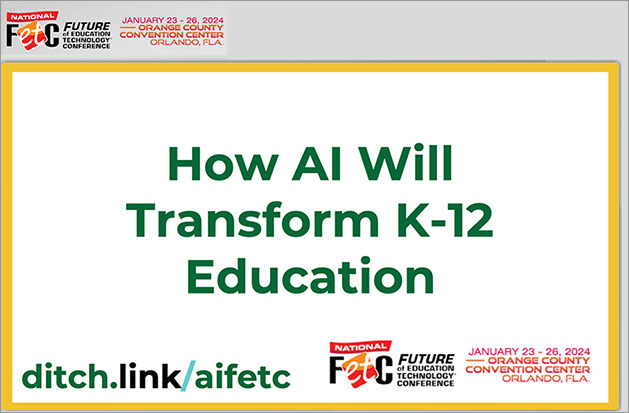
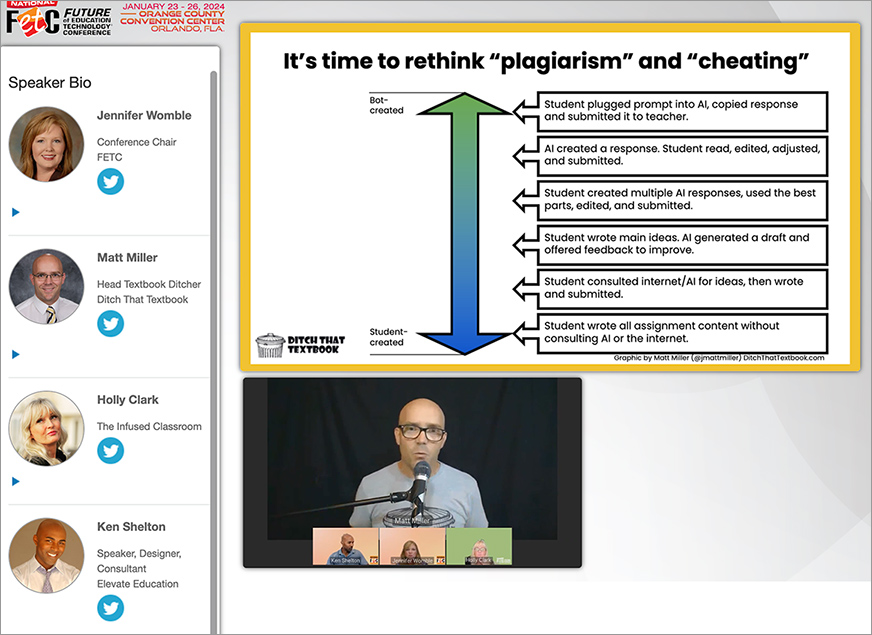
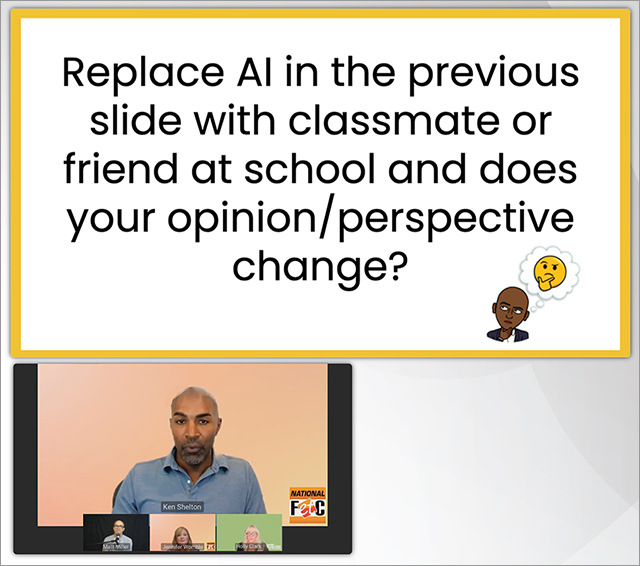
The Cambrian Explosion of AI Edtech Is Here — from edtechinsiders.substack.com by Alex Sarlin, Sarah Morin, and Ben Kornell
Excerpt:
Our AI in Edtech Takeaways
After chronicling 160+ AI tools (which is surely only a small fraction of the total), we’re seeing a few clear patterns among the tools that have come out so far- here are 10 categories that are jumping out!
- Virtual Teaching Assistants:
- Virtual Tutors:
- AI-Powered Study Tools:
- Educational Content Creation:
- Educational Search:
- Auto-generated Learning Paths:
- AI-Powered Research:
- Speak to Characters:
- Grammar and Writing:
- AI Cheating Detection:
Excerpt:
“I don’t usually get worked up about announcements but I see promise in JFF’s plans for a new Center for Artificial Intelligence & the Future of Work, in no small part because the organization bridges higher ed, K-12 education, employers, and policymakers.”
Goldie Blumenstyk
Goldie’s article links to:
Jobs for the Future Launches New Center for Artificial Intelligence & the Future of Work — from archive.jff.org
Center launches as JFF releases preliminary survey data which finds a majority of workers feel they need new skills and training to prepare for AI’s future impact.
Excerpt:
BOSTON June 14, 2023 —Jobs for the Future (JFF), a national nonprofit that drives transformation in the U.S. education and workforce systems, today announced the launch of its new Center for Artificial Intelligence &the Future of Work. This center will play an integral role in JFF’s mission and newly announced 10-year North Star goal to help 75 million people facing systemic barriers to advancement work in quality jobs. As AI’s explosive growth reshapes every aspect of how we learn, work, and live, this new center will serve as a nexus of collaboration among stakeholders from every part of the education-to-career ecosystem to explore the most promising opportunities—and profound challenges—of AI’s potential to advance an accessible and equitable future of learning and work.
OpenAI Considers ‘App Store’ For ChatGPT — from searchenginejournal.com by; with thanks to Barsee at AI Valley for this resource
OpenAI explores launching an ‘app store’ for AI models, potentially challenging current partners and expanding customer reach.
Highlights:
- OpenAI considers launching an ‘app store’ for customized AI chatbots.
- This move could create competition with current partners and extend OpenAI’s customer reach.
- Early interest from companies like Aquant and Khan Academy shows potential, but product development and market positioning challenges remain.
The Rise of AI: New Rules for Super T Professionals and Next Steps for EdLeaders — from gettingsmart.com by Tom Vander Ark
Key Points
- The rise of artificial intelligence, especially generative AI, boosts productivity in content creation–text, code, images and increasingly video.
- Here are six preliminary conclusions about the nature of work and learning.
Wonder Tools: AI to try — from wondertools.substack.com by Jeremy Caplan
9 playful little ways to explore AI
Excerpt:
- Create a personalized children’s story ? | Schrodi
Collaborate with AI on a free customized, illustrated story for someone special. Give your story’s hero a name, pick a genre (e.g. comedy, thriller), choose an illustration style (e.g. watercolor, 3d animation) and provide a prompt to shape a simple story. You can even suggest a moral. After a minute, download a full-color PDF to share. Or print it and read your new mini picture book aloud. - Generate a quiz ? | Piggy
Put in a link, a topic, or some text and you’ll get a quiz you can share, featuring multiple-choice or true-false questions. Example: try this quick entrepreneurship quiz Piggy generated for me.
3 Questions for Coursera About Generative AI in Education — from insidehighered.com by Joshua Kim
How this tech will change the learning experience, course creation and more.
Excerpt (emphasis DSC):
Q: How will generative AI impact teaching and learning in the near and long term?
Baker Stein: One-on-one tutoring at scale is finally being unlocked for learners around the world. This type of quality education is no longer only available to students with the means to hire a private tutor. I’m also particularly excited to see how educators make use of generative AI tools to create courses much faster and likely at a higher quality with increased personalization for each student or even by experimenting with new technologies like extended reality. Professors will be able to put their time toward high-impact activities like mentoring, researching and office hours instead of tedious course-creation tasks. This helps open up the capacity for educators to iterate on their courses faster to keep pace with industry and global changes that may impact their field of study.
Another important use case is how generative AI can serve as a great equalizer for students when it comes to writing, especially second language learners.
As AI Spreads, Experts Predict the Best and Worst Changes in Digital Life by 2035 — from pewresearch.org by Janna Anderson and Lee Rainie
They have deep concerns about people’s and society’s overall well-being. But they also expect great benefits in health care, scientific advances and education
Table of Contents
- A sampling of overarching views on digital change
- Expert essays on the expected impact of digital change by 2035
- Themes: The most harmful or menacing changes in digital life that are likely by 2035
- Themes: The best and most beneficial changes in digital life that are likely by 2035
- Closing thoughts on ChatGPT and other steps in the evolution of humans, digital tools and systems by 2035About this canvassing of experts
DC: This is the type of thing that might impact the interface design of future #AI related applications. If so, our current efforts to refine prompts may have a shorter lifespan that we expected.https://t.co/MuNMf2kGwL
— Daniel Christian (he/him/his) (@dchristian5) June 26, 2023
Online learning: Is it worth trying? — from social-and-emotional-learning.educationtechnologyinsights.com by Dr. Miko Nino
From DSC:
Dr. Nino makes several solid points in this article. The article won’t let me copy/paste some excerpts for you, but I would encourage you to look at it.
I would add a few things:
- The huge advantage of online-based learning is that a significant amount of learning-related data is automatically captured and doesn’t need to be manually entered (if such manually entered data ever does get entered…which most of it doesn’t).
- Learners have much more control over the pacing within the digital realm — i.e., which media they want to use as well as stopping/fast-forwarding/rewinding certain kinds of media.
- Most people are now required to be lifelong learners — where convenience and time-savings become very important factors in continuing one’s education
- And finally, as AI and other technologies continue to make their way forward, it will be hard to beat online-based and/or hybrid-based learning.
Apple’s $3,499 Vision Pro AR headset is finally here — from techcrunch.com by Brian Heater
Image Credits: Apple
Excerpts:
“With Vision Pro, you’re no longer limited by a display,” Apple CEO Tim Cook said, introducing the new headset at WWDC 2023. Unlike earlier mixed reality reports, the system is far more focused on augmented reality than virtual. The company refresh to this new paradigm is “spatial computing.”
Reflections from Scott Belsky re: the Vision Pro — from implications.com
Apple WWDC 2023: Everything announced from the Apple Vision Pro to iOS 17, MacBook Air and more — from techcrunch.com by Christine Hall
Apple unveils new tech — from therundown.ai (The Rundown)
Here were the biggest things announced:
- A 15” Macbook Air, now the thinnest 15’ laptop available
- The new Mac Pro workstation, presumably a billion dollars
- M2 Ultra, Apple’s new super chip
- NameDrop, an AirDrop-integrated data-sharing feature allowing users to share contact info just by bringing their phones together
- Journal, an ML-powered personalized journalling app
- Standby, turning your iPhone into a nightstand alarm clock
- A new, AI-powered update to autocorrect (finally)
- Apple Vision Pro
Apple announces AR/VR headset called Vision Pro — from joinsuperhuman.ai by Zain Kahn
Excerpt:
“This is the first Apple product you look through and not at.” – Tim Cook
And with those famous words, Apple announced a new era of consumer tech.
Apple’s new headset will operate on VisionOS – its new operating system – and will work with existing iOS and iPad apps. The new OS is created specifically for spatial computing — the blend of digital content into real space.
Vision Pro is controlled through hand gestures, eye movements and your voice (parts of it assisted by AI). You can use apps, change their size, capture photos and videos and more.
From DSC:
Time will tell what happens with this new operating system and with this type of platform. I’m impressed with the engineering — as Apple wants me to be — but I doubt that this will become mainstream for quite some time yet. Also, I wonder what Steve Jobs would think of this…? Would he say that people would be willing to wear this headset (for long? at all?)? What about Jony Ive?
I’m sure the offered experiences will be excellent. But I won’t be buying one, as it’s waaaaaaaaay too expensive.
Why L&D should be at the forefront of the AI revolution — from managementtoday.co.uk by Bill Borrows
AI means that 50% of all employees will need reskilling or upskilling by 2025, according to the World Economic Forum.
Excerpt (emphasis DSC):
Ernst and Young dug a little deeper. “Today’s disruptive working landscape requires organisations to largely restructure the way they are doing work,” they noted in a bulletin in March this year. “Time now spent on tasks will be equally divided between people and machines. For these reasons, workforce roles will change and so do the skills needed to perform them.”
The World Economic Forum has pointed to this global skills gap and estimates that, while 85 million jobs will be displaced, 50% of all employees will need reskilling and/or upskilling by 2025. This, it almost goes without saying, will require Learning and Development departments to do the heavy-lifting in this initial transformational phase but also in an on-going capacity.
“And that’s the big problem,” says Hardman. “2025 is only two and half years away and the three pillars of L&D – knowledge transference, knowledge reinforcement and knowledge assessment – are crumbling. They have been unchanged for decades and are now, faced by revolutionary change, no longer fit for purpose.”
ChatGPT is the shakeup education needs — from eschoolnews.com by Joshua Sine
As technology evolves, industries must evolve alongside it, and education is no exception–especially when students heavily and regularly rely on edtech
Key points:
- Education must evolve along with technology–students will expect it
- Embracing new technologies helps education leverage adaptive technology that engage student interest
- See related article: AI tools are set to impact tutoring in a big way
My department asked me to give a brief talk about #GPT to them to help folks learn more about what’s going on. Here are my #tips in distilled form.
— Andrew Piper (@_akpiper) June 5, 2023
Welcome to the new surreal. How AI-generated video is changing film. — from technologyreview.com by Will Douglas Heaven
Exclusive: Watch the world premiere of the AI-generated short film The Frost.
.
BEST 40 AI artists you need to follow now?? pic.twitter.com/t7WiXORhE2
— Rushik (@hey_rushik) June 2, 2023
The Future Of Education – Disruption Caused By AI And ChatGPT: Artificial Intelligence Series 3 Of 5 — from forbes.com by Nicole Serena Silver
Here are some ways AI can be introduced at various age levels
AI21 Labs concludes largest Turing Test experiment to date — from ai21.com
As part of an ongoing social and educational research project, AI21 Labs is thrilled to share the initial results of what has now become the largest Turing Test in history by scale.
.
? So much has happened in the world of AI these past 7 days.
It’s going to change many industries you thought you knew.
12 recent AI developments that are not just reshaping the industry, but our everyday lives:
— Barsee ? (@heyBarsee) May 30, 2023
From DSC:
I also wanted to highlight the item below, which Barsee also mentioned above, as it will likely hit the world of education and training as well:
Last night, Jensen Huang of NVIDIA gave his very first live keynote in 4-years.
The most show-stopping moment from the event was when he showed off the real-time AI in video games. A human speaks, the NPC responds, in real time and the dialogue was generated with AI on the fly. pic.twitter.com/TDoUM1zSiy
— Matt Wolfe (@mreflow) May 29, 2023
Also relevant/see:
- Digital Renaissance: NVIDIA Neuralangelo Research Reconstructs 3D Scenes — from blogs.nvidia.com









